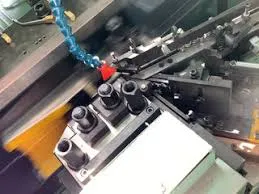
-
 Afrikaans
Afrikaans -
 Albanian
Albanian -
 Amharic
Amharic -
 Arabic
Arabic -
 Armenian
Armenian -
 Azerbaijani
Azerbaijani -
 Basque
Basque -
 Belarusian
Belarusian -
 Bengali
Bengali -
 Bosnian
Bosnian -
 Bulgarian
Bulgarian -
 Catalan
Catalan -
 Cebuano
Cebuano -
 Corsican
Corsican -
 Croatian
Croatian -
 Czech
Czech -
 Danish
Danish -
 Dutch
Dutch -
 English
English -
 Esperanto
Esperanto -
 Estonian
Estonian -
 Finnish
Finnish -
 French
French -
 Frisian
Frisian -
 Galician
Galician -
 Georgian
Georgian -
 German
German -
 Greek
Greek -
 Gujarati
Gujarati -
 Haitian Creole
Haitian Creole -
 hausa
hausa -
 hawaiian
hawaiian -
 Hebrew
Hebrew -
 Hindi
Hindi -
 Miao
Miao -
 Hungarian
Hungarian -
 Icelandic
Icelandic -
 igbo
igbo -
 Indonesian
Indonesian -
 irish
irish -
 Italian
Italian -
 Japanese
Japanese -
 Javanese
Javanese -
 Kannada
Kannada -
 kazakh
kazakh -
 Khmer
Khmer -
 Rwandese
Rwandese -
 Korean
Korean -
 Kurdish
Kurdish -
 Kyrgyz
Kyrgyz -
 Lao
Lao -
 Latin
Latin -
 Latvian
Latvian -
 Lithuanian
Lithuanian -
 Luxembourgish
Luxembourgish -
 Macedonian
Macedonian -
 Malgashi
Malgashi -
 Malay
Malay -
 Malayalam
Malayalam -
 Maltese
Maltese -
 Maori
Maori -
 Marathi
Marathi -
 Mongolian
Mongolian -
 Myanmar
Myanmar -
 Nepali
Nepali -
 Norwegian
Norwegian -
 Norwegian
Norwegian -
 Occitan
Occitan -
 Pashto
Pashto -
 Persian
Persian -
 Polish
Polish -
 Portuguese
Portuguese -
 Punjabi
Punjabi -
 Romanian
Romanian -
 Russian
Russian -
 Samoan
Samoan -
 Scottish Gaelic
Scottish Gaelic -
 Serbian
Serbian -
 Sesotho
Sesotho -
 Shona
Shona -
 Sindhi
Sindhi -
 Sinhala
Sinhala -
 Slovak
Slovak -
 Slovenian
Slovenian -
 Somali
Somali -
 Spanish
Spanish -
 Sundanese
Sundanese -
 Swahili
Swahili -
 Swedish
Swedish -
 Tagalog
Tagalog -
 Tajik
Tajik -
 Tamil
Tamil -
 Tatar
Tatar -
 Telugu
Telugu -
 Thai
Thai -
 Turkish
Turkish -
 Turkmen
Turkmen -
 Ukrainian
Ukrainian -
 Urdu
Urdu -
 Uighur
Uighur -
 Uzbek
Uzbek -
 Vietnamese
Vietnamese -
 Welsh
Welsh -
 Bantu
Bantu -
 Yiddish
Yiddish -
 Yoruba
Yoruba -
 Zulu
Zulu
OEM Thread Rolling Machine Configuration and Best Practices for Optimal Performance and Efficiency
Setting Up an OEM Thread Rolling Machine A Step-by-Step Guide
Thread rolling is a popular manufacturing process used to create precise and strong threads on metal and plastic parts. An Original Equipment Manufacturer (OEM) thread rolling machine is specially designed for this purpose, allowing for high-speed production with minimal waste. Whether you are setting up a new machine in your facility or optimizing an existing setup, achieving the right configuration is essential for maximizing efficiency and product quality. Here’s a comprehensive guide on how to set up an OEM thread rolling machine effectively.
Understanding the Components
Before diving into the setup process, it is crucial to understand the main components of a thread rolling machine. These typically include the thread rolls, the workpiece feed mechanism, the lubrication system, and the control panel. Each of these components plays a vital role in the thread rolling process, and their proper setup ensures smooth operation.
Step 1 Preparing the Workspace
A clean and organized workspace is key to a successful machine setup. Ensure that the area around the thread rolling machine is free from debris and obstacles. Confirm adequate lighting for visibility, and gather all necessary tools and materials, including the workpieces, thread rolling dies, and lubricants.
Step 2 Installing the Thread Rolls
The thread rolls are integral to creating the desired thread profile. Begin by selecting the correct thread rolling dies based on the specifications of the threads you intend to produce. Carefully install the thread rolls on the machine, ensuring they are properly aligned and securely fastened. Misalignment can lead to inconsistent threading and increased wear on the rolls.
Step 3 Adjusting the Feed Mechanism
- Setting the Feed Rate Depending on the type of material and the thread specifications, adjust the feed rate accordingly. A slower feed rate may be necessary for harder materials to ensure quality, while softer materials may allow for faster feeding.
oem thread rolling machine setup

- Aligning the Workpiece Load the workpiece into the feed mechanism and ensure that it is aligned correctly. Improper alignment can lead to defects in the thread formation and may even damage the machine.
Step 4 Lubrication
Lubrication is essential in thread rolling to reduce friction and heat, enhance surface finish, and prolong the life of the thread rolls. Apply the appropriate lubricant recommended for the materials you are working with. It is important to ensure a consistent application that reaches all critical points. Check the lubrication system for any blockages or faults to ensure optimal performance.
Step 5 Testing and Calibration
Before beginning mass production, conduct a test run with a sample workpiece. Monitor the machine for any unusual noises or vibrations, which may indicate a setup issue. Measure the threads produced to verify that they meet the desired specifications. If necessary, make adjustments to the feed rate, roll alignment, or other machine settings based on the test results.
Step 6 Training the Operators
Finally, ensure that operators are well-trained in the machine’s operation and safety protocols. Familiarity with the equipment will help prevent mishandling and ensure a safer working environment. Continuous operator training can also lead to more efficient setups and problem-solving on the production floor.
Conclusion
Setting up an OEM thread rolling machine involves careful planning, proper installation of components, and thorough testing. By following these steps, manufacturers can optimize their thread rolling processes, ensuring high-quality output and increased productivity. With the right setup, thread rolling can become a streamlined and efficient part of the manufacturing operation, contributing to overall business success.
